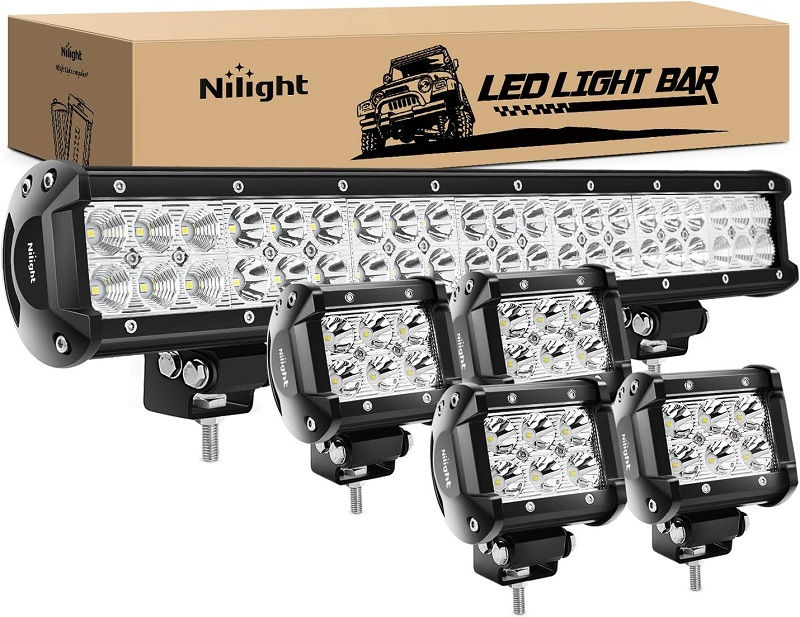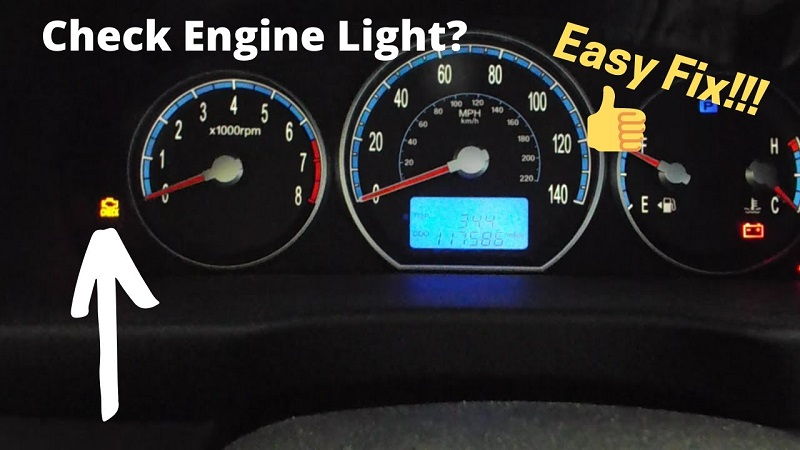This post contains affiliate links. This means I will make a commission at no extra cost to you should you click through and make a purchase [ “As an Amazon Associate, I earn from qualifying purchases.” ]. Read the full disclosure here.
Hyundai Check Engine Light GuideMechanic.Com When it comes to your Hyundai vehicle, the check engine light can be a cause for concern. It’s a small, seemingly innocuous light on your dashboard that can lead to a range of emotions.
While it may be tempting to ignore it or panic, understanding what the check engine light means and what steps to take can help you address the issue swiftly and efficiently.
In this comprehensive guide, we will delve into the causes behind the Hyundai check engine light, explore common problems that trigger it, and provide you with insights on how to diagnose and fix these issues.
Whether you’re a seasoned Hyundai owner or a first-time driver, this article will equip you with the knowledge you need to navigate the complexities of your check engine light.
See Also: P0441 Hyundai Sonata: The Steps Involved In Diagnosing P0441
Common Causes of the Hyundai Check Engine Light

The check engine light can be triggered by a variety of issues, ranging from minor to more severe. Understanding the common causes can help you narrow down the potential problem and take appropriate action. Here are some of the most frequent culprits behind the Hyundai check engine light:
1. Loose or Faulty Gas Cap
A loose or faulty gas cap is one of the simplest causes of the check engine light. If the gas cap is not tightened properly or is damaged, it can lead to fuel vapor leaks and trigger the check engine light. Inspect your gas cap and ensure it is securely fastened. If you notice any cracks or damage, consider replacing it.
2. Oxygen Sensor Malfunction
The oxygen sensor is responsible for monitoring the amount of oxygen in the exhaust gases. A malfunctioning oxygen sensor can lead to improper fuel-to-air ratio, reduced fuel efficiency, and increased emissions. Replacing a faulty oxygen sensor is relatively straightforward and can help resolve the check engine light issue.
3. Faulty Catalytic Converter
The catalytic converter plays a crucial role in reducing harmful emissions from your Hyundai’s exhaust system.
A malfunctioning catalytic converter can trigger the check engine light and result in decreased engine performance and increased emissions. Replacing a faulty catalytic converter is essential to maintain your vehicle’s environmental compliance.
4. Mass Airflow Sensor Failure
The mass airflow sensor measures the amount of air entering the engine, allowing the fuel injection system to adjust accordingly.
A failed mass airflow sensor can lead to improper air-fuel mixture, resulting in reduced engine performance, rough idling, and increased fuel consumption. Replacing the mass airflow sensor can resolve the check engine light issue.
5. Spark Plug or Ignition Coil Issues
Spark plugs and ignition coils play a crucial role in the ignition process, providing the necessary spark to ignite the air-fuel mixture in the combustion chamber.
Worn-out spark plugs or faulty ignition coils can lead to misfires, reduced engine performance, and increased emissions. Replacing these components can help resolve the check engine light issue.
6. EGR Valve Dysfunction
The Exhaust Gas Recirculation (EGR) valve helps reduce nitrogen oxide emissions by recirculating a portion of the exhaust gases back into the intake manifold.
A malfunctioning EGR valve can result in increased emissions, rough idling, and decreased fuel efficiency. Cleaning or replacing the EGR valve can resolve the check engine light issue.
7. Engine Misfire
An engine misfire occurs when one or more cylinders in your Hyundai’s engine fail to ignite properly. This can be caused by various factors, such as a malfunctioning fuel injector, a vacuum leak, or a problem with the ignition system.
Diagnosing and resolving the underlying cause of the engine misfire is crucial to address the check engine light issue.
8. Transmission Issues
Problems with the transmission can trigger the check engine light in your Hyundai. Issues such as low transmission fluid, a faulty solenoid, or a malfunctioning sensor can disrupt the normal operation of the transmission, leading to decreased performance and potential damage. Diagnosing and repairing transmission issues promptly can help resolve the check engine light problem.
9. Evaporative Emission Control System Leak
The evaporative emission control system prevents fuel vapors from escaping into the atmosphere. A leak in this system can trigger the check engine light and result in increased emissions.
See Also: P0441 Hyundai Accent: Causes Of The P0441 Error Code
Common causes of evaporative emission control system leaks include a loose or damaged gas cap, cracked hoses, or a faulty charcoal canister. Identifying and fixing the source of the leak is essential to address the check engine light issue.
10. Electrical System Malfunction
Electrical issues, such as a faulty sensor or a wiring problem, can trigger the check engine light in your Hyundai.
These problems can be challenging to diagnose, as they may require specialized equipment and expertise. Seeking professional help is recommended when dealing with electrical system malfunctions.
How to Diagnose the Check Engine Light

When the check engine light illuminates, it is essential to diagnose the underlying cause to address the issue effectively. Here are the steps you can take to diagnose the check engine light in your Hyundai:
1. Check for Loose Gas Cap
As mentioned earlier, a loose or faulty gas cap can trigger the check engine light. Start by inspecting the gas cap and ensuring it is tightened securely. If the light persists after tightening the gas cap, move on to the next steps.
2. Use an OBD-II Scanner
An OBD-II scanner is a diagnostic tool that allows you to retrieve error codes from your vehicle’s onboard computer system.
Plug the OBD-II scanner into the diagnostic port, usually located under the dashboard, and follow the instructions to retrieve the error codes.
3. Interpret the Error Codes
Once you have retrieved the error codes using the OBD-II scanner, you need to interpret them to understand the underlying issue.
Each error code corresponds to a specific problem or component in your Hyundai. Consult the scanner’s manual or reliable online resources to decipher the error codes.
4. Research the Error Codes
After identifying the error codes, conduct thorough research to understand what they mean and the potential causes.
Online automotive forums, manufacturer websites, and repair manuals can provide valuable information to help you diagnose the specific problem.
5. Check for Visible Issues
Inspect your Hyundai’s engine bay and surrounding components for any visible signs of damage or issues.
Look for loose or disconnected hoses, damaged wires, or leaking fluids. Identifying visible issues can narrow down the potential causes of the check engine light.
6. Seek Professional Help
If you are unable to diagnose the issue or lack the necessary tools and expertise, it is recommended to seek professional help.
A qualified mechanic or Hyundai dealership will have the necessary diagnostic equipment and experience to pinpoint the problem accurately.
DIY Fixes for the Check Engine Light

While some check engine light issues require professional intervention, there are several DIY fixes you can attempt. It is important to note that these fixes are general suggestions and may not apply to every situation.
Always refer to your vehicle’s manual and consult with professionals when in doubt. Here are some common DIY fixes for check engine light issues:
1. Replace the Oxygen Sensor
If the check engine light is triggered by a faulty oxygen sensor, you can replace it yourself in some cases. Refer to your vehicle’s manual for the location of the oxygen sensor and follow the step-by-step instructions provided. Ensure you use the correct replacement sensor for your Hyundai model.
2. Tighten or Replace the Gas Cap
If the check engine light is due to a loose or faulty gas cap, you can try tightening it securely. If the gas cap is damaged or cracked, it is advisable to replace it with a new one. Ensure you purchase a compatible gascap for your specific Hyundai model to ensure a proper seal.
3. Clean or Replace the EGR Valve
If the check engine light is caused by a malfunctioning EGR valve, you can attempt to clean it yourself. Start by locating the EGR valve in your Hyundai’s engine bay, usually near the intake manifold.
See Also: Hyundai Sonata Won’T Start But Battery Is Good
Remove the valve and clean it using a specialized EGR valve cleaner. If cleaning doesn’t resolve the issue, you may need to replace the EGR valve altogether.
4. Replace Spark Plugs and Ignition Coils
Worn-out spark plugs or faulty ignition coils can trigger the check engine light. Depending on your mechanical skills and comfort level, you can attempt to replace these components yourself.
Refer to your vehicle’s manual for the location of the spark plugs and ignition coils and follow the provided instructions. Ensure you use the recommended spark plugs and ignition coils for your Hyundai model.
5. Clean or Replace the Mass Airflow Sensor
If the check engine light is caused by a malfunctioning mass airflow sensor, you can try cleaning it to restore its functionality. Locate the mass airflow sensor in your Hyundai’s intake system and carefully remove it.
Clean the sensor using a specialized mass airflow sensor cleaner according to the instructions provided. If cleaning doesn’t resolve the issue, you may need to replace the mass airflow sensor.
6. Clear Error Codes and Reset the System
If you have successfully diagnosed and resolved the issue triggering the check engine light, you can clear the error codes and reset the system.
Use an OBD-II scanner to clear the codes or disconnect the negative terminal of your vehicle’s battery for a few minutes. Reconnect the battery and start your Hyundai to see if the check engine light remains off.
Clearing the Check Engine Light
Once you have successfully diagnosed and resolved the issue triggering the check engine light, you may wonder how to turn off the light. Here are the steps to clear the check engine light and reset the system:
1. Use an OBD-II Scanner
The most efficient way to clear the check engine light is by using an OBD-II scanner. Connect the scanner to the diagnostic port under the dashboard and follow the instructions to clear the error codes.
Ensure that the underlying issue has been resolved before clearing the codes to prevent the light from reappearing.
2. Disconnect the Battery
If you don’t have access to an OBD-II scanner, an alternative method is to disconnect the negative terminal of your vehicle’s battery for a few minutes.
This will reset the vehicle’s onboard computer system and clear the error codes. However, keep in mind that disconnecting the battery may reset other settings in your Hyundai, such as radio presets and clock.
3. Drive the Vehicle
In some cases, simply driving the vehicle for a certain number of miles may cause the check engine light to turn off.
This method is not guaranteed to work for all situations, but it can be worth a try if you have resolved the underlying issue and the light remains on. However, if the problem persists, it is best to consult a professional.
Prevention Tips to Avoid the Check Engine Light
Preventing check engine light issues is always preferable to dealing with them after they occur. Here are some prevention tips to help you avoid the check engine light:
1. Regular Maintenance
Follow your Hyundai’s recommended maintenance schedule, including oil changes, filter replacements, and fluid checks.
Regular maintenance helps identify and address potential issues before they become significant problems that trigger the check engine light.
2. Address Warning Signs Promptly
If you notice any warning signs, such as unusual noises, vibrations, or performance issues, address them promptly.
Ignoring warning signs can lead to more severe problems that trigger the check engine light. Consult your vehicle’s manual or a professional mechanic for guidance.
3. Fill up with Quality Fuel
Using high-quality fuel can help prevent issues with fuel injectors, sensors, and other components. Avoid filling up your Hyundai with low-quality or contaminated fuel, as it can lead to engine problems that trigger the check engine light.
4. Drive Responsibly
Reckless driving can put unnecessary strain on your vehicle, leading to potential issues that trigger the check engine light.
See Also: Hyundai Battery Discharge Warning
Practice responsible driving habits, such as avoiding aggressive acceleration and braking, to reduce wear and tear on your Hyundai’s components.
5. Perform Visual Inspections
Regularly inspect your Hyundai’s engine bay for any visible signs of damage or issues. Look for loose or disconnected hoses, damaged wires, or leaking fluids. Identifying and addressing visible issues promptly can prevent them from escalating and triggering the check engine light.
Understanding the Check Engine Light and Emissions Testing
If your Hyundai is due for an emissions test, understanding the relationship between the check engine light and emissions is crucial. Here’s what you need to know:
1. Check Engine Light and Emissions Test
In many states, vehicles must undergo emissions testing to ensure they meet environmental regulations. If the check engine light is illuminated, your Hyundai will not pass the emissions test.
The check engine light indicates that there is an issue with one or more components or systems that affect emissions.
2. Resolving Check Engine Light Issues for Emissions Test
Prior to taking your Hyundai for an emissions test, it is essential to address any check engine light issues. Start by diagnosing the problem using the methods outlined earlier in this article.
Once the issue is identified and resolved, clear the check engine light using an OBD-II scanner or by disconnecting the battery. Ensure that the light remains off before proceeding with the emissions test.
The Role of the Check Engine Light in Hyundai Warranty Claims
If your Hyundai is still under warranty, the check engine light can play a significant role in warranty claims. Here’s what you need to know:
1. Promptly Address Check Engine Light Issues
If the check engine light illuminates while your Hyundai is under warranty, it is crucial to address the issue promptly. Failure to address check engine light issues in a timely manner can result in warranty disputes.
Document all steps taken to diagnose and resolve the problem, including receipts, repair orders, and communication with the dealership or mechanic.
2. Warranty Coverage for Check Engine Light Issues
The specific coverage for check engine light issues under your Hyundai warranty can vary. Some warranties may cover diagnostic fees, parts, and labor, while others may have limitations.
Refer to your warranty documentation or consult with the dealership to understand the extent of coverage for check engine light-related problems.
See Also: Hyundai Sonata Check Engine Light
Related video of Understanding the Hyundai Check Engine Light: Causes, Solutions, and More
- Seafoam Catalytic Converter Cleaner: It Work & How to Use It? - April 18, 2025
- Rislone Catalytic Converter Cleaner: What It Is, How It Works - April 18, 2025
- Wynn’s Catalytic Converter Cleaner 325ml - April 17, 2025

